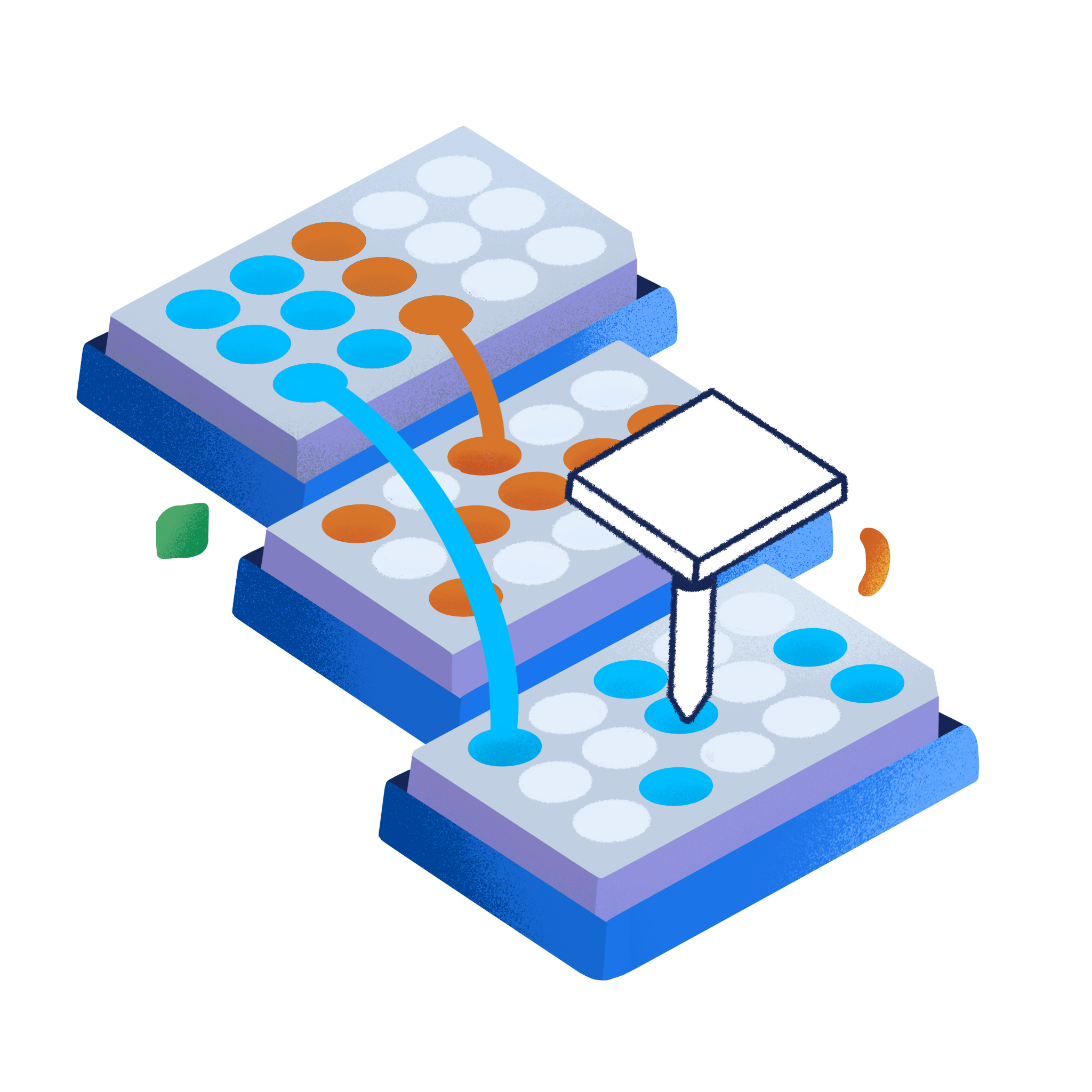
HIT picking, commonly referred to as cherry picking, involves the precise selection of specific samples or “hits” that display desired characteristics from a large set. It’s crucial in high-throughput screening workflows like drug discovery, genomic studies, and proteomics.

HIT picking and cherry picking essentially refer to the same process. Both terms describe the selective identification and isolation of specific samples, or “hits”, from a larger set based on desired characteristics. This process is instrumental in high-throughput workflows such as drug discovery, genomic studies, and proteomics.
The scale of HIT picking poses challenges, especially when done manually, due to the potential for human error, physical fatigue, and slow throughput. To mitigate these issues, automation of HIT picking is recommended. Automated systems integrate robotics with liquid handling devices to quickly and accurately select “hits”, and they often include features like barcoding, temperature control, and data management software.
The term ‘HIT picking’ originated from the practice of selecting “hits” or positive results from a large-scale screening process, often in the context of identifying potential drug candidates. The term ‘hit’ is used metaphorically to signify a positive result, much like scoring a ‘hit’ in target-based games.
On the other hand, ‘cherry picking’ is a term that metaphorically migrated from its original context of picking the ripest or most desirable cherries from a tree. In a similar vein, in scientific research, cherry picking refers to the practice of carefully selecting the most promising or suitable samples from a larger set for further analysis.
HIT picking is particularly crucial in workflows such as:
The OT-2 is a bench-top liquid handler designed to be accessible and flexible enough to automate many common applications.
Opentrons helps you automate Cherrypicking with open-source protocols for the OT-2 and Opentrons Flex
Cherry picking is challenging due to the sheer scale of the task. In high-throughput workflows, thousands to millions of samples may need to be screened. Manual selection and processing of “hits” can be laborious, time-consuming, and prone to error.
Automation of HIT Picking (Cherry Picking) often involves the integration of robotic systems with liquid handling devices. These systems can rapidly and accurately pick “hits” based on preset criteria. They often include features such as barcoding for sample tracking, temperature control for sample stability, and software for data management and analysis.
Our team of experts can help figure out if automation is right for you. Book a virtual demo to discuss your workflow needs with an expert.